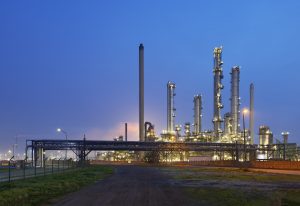Gas detection sensors are essential for effective gas detection and ensuring the safety of all workers. A fundamental element in selecting the correct sensor is to have an idea of the gases and vapors present in a specific environment.

The choice of the ideal sensor depends on several factors: the risk of explosion, the level of oxygen present, cross-sensitivity, and the toxicity. There are four common types of gas detection sensors available for monitoring systems:
1. Catalytic Sensors – Catalytic gas detection sensors oxidize a combustible gas and convert the temperature changes into an electrical signal. A catalytic sensor is the most common type of sensor used for detecting and measuring combustible gases, such as methane and hydrogen.
2. Electrochemical Sensors – Electrochemical sensors measure the concentration of a target gas by oxidizing or reducing the target gas and the electrode is measuring the resulting electrical current output. Electrochemical gas detection sensors are commonly used for detecting oxygen and toxic gases.
3. Infrared Sensors – An infrared sensor measures trace gases by determining the absorption of an emitted infrared light source through an air sample. Infrared gas detection sensors are used for detecting high concentrations of carbon dioxide and combustible gases when there is no oxygen present.
4. Photoionization (PID) Sensors – PID sensors break down molecules into positive and negative charged ions and measure the electrical charge of these ions by using a detector to display the gas that is present. PID gas detection sensors measure a variety of toxic gases and volatile organic compounds (VOCs) from parts per billion (ppb) to parts per million (ppm), depending on the gas being measured.
Do you have a question regarding the types of gas detection sensors suitable for your system or application? With more than 150 years of combined instrumentation and application knowledge, DOD Technologies is prepared to offer its
expertise and solutions for your toughest gas monitoring requirements.
Contact us today via phone at (815) 788-5200 or our web form.







